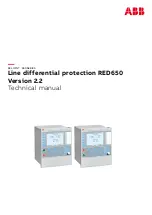
Instructions for use
antistatic protective garment against heat risks, electric arc and liquid chemicals
Good
PRO
SF1
Oliver
PPE - category III
Manufacturer:
Good
PRO
, s.r.o., Dukelska 1247, 334 01 Prestice, Czech republic, www.goodpro.cz
Material:
65% Lenzing FR, 22% aramid, 12% polyamid, 1% Belltron, weight 250 g/m²
Description:
The garment is made of the fabric with Lenzing FR
®
fibres, and provides not only protection, but also excellent comfort thanks to its
extraordinary thermoregulation properties. The fabric contains conductive fibres which safely take away static electricity. The fabric also
protects against the negative effects of the exposure to arc flash and ensures a limited protection against liquid chemicals.
EN ISO 11612:
In contact with flame or small burning particles the material becomes carbonized, but the fire does not spread
–
it therefore prevents
injuries caused by burning clothes. In case of any accidental splashes by liquid chemicals and/or flammable liquids, the wearer must retreat
immediately and take off the garment carefully. Avoid any contact with skin. The contaminated garment must be cleaned or discarded.
EN ISO 11611:
This protective garment is in compliance with Standard EN ISO 11611, class 1. It ensures protection against welding hazards and similar
related processes. This type of protective clothing is intended to protect the wearer against fire, radiant heat, molten-metal splashes, short
contact time with flame, radiant heat from the arc, and minimizes the possibility of electrical shock by short-term, accidental contact with
live electrical conductors at voltages up to approximately 100 V d.c. in normal conditions of welding. Sweat, soiling or other contaminants
can affect the level of protection provided against short-term accidental contact with live electric conductors at these voltages. The
contamination by flammable substances can lead to the degradation of the level of flame resistance. The protective garment of class 1 can
be used for flame welding, WIG (Wolfram-Inert-Gas) and MIG (Metal-Inert-Gas) welding, plasma arc welding and spot welding, brazing and
MMA (Manual-Metal-Arc) welding as well as for oxygen torch cutting, plasma torch cutting and the use of resistance welding machines. The
protective garment, class 2, can be used for MIG welding, MAG and MMA welding, oxygen torch cutting, plasma torch cutting, metallization
as well as welding in confined spaces or above the head. The protective garment should be regularly checked. Any damage caused by
intensive UV radiation, radiant heat, flying sparks or molten-metal droplets can lead to the degradation of the protective features of the
garment. For further information, please, check standard EN ISO 11611, Annex A, B.
EN 1149-5:
This protective garment conforms to the requirements of standard EN 1149-5 and is designed to prevent incendiary discharges. The
garment can be used on the premises with flammable atmosphere only in compliance with the valid standards and regulations governing
the protection against static electricity. The wearer dressed in electrostatic dissipative protection garment must be well-grounded through a
resistance lower than 10
8
Ω
we also recommend to wear suitable footwear. Electrostatic dissipative protection garment must be well-
fastened, do not take it off in the close proximity of flammable or explosive atmospheres or when handling flammable or explosive
substances. Electrostatic dissipative protection garment must not be used in oxygen enriched flammable atmosphere without the prior
approval of the responsible safety officer. The excessive wear and use, damage, laundering or possible contamination can influence the
antistatic properties of the garment. When used, electrostatic dissipative protective clothing should permanently cover all non-complying
materials during normal use (including bending and movements).
EN 13034:
This garment has a special FC treatment, which provides a limited protection against liquid chemicals. FC treatment must be repeated after
20 wash cycles
–
use the waterproofing agent HYDROB FC (see the instructions). The design of the personal protective clothing with limited
protective performance against liquid chemicals covers the lowest level of chemical protection
–
it protects against potential exposure to
small quantities of spray, liquid aerosols or low pressure or low volume splashes against which a complete liquid permeation barrier (at a
molecular level) is not required. The garment is designed to protect against chemicals, type 6. It has been tested as a set.
EN 61482-1-1:
This personal protective garment is in compliance with standard EN 61482-1-1, which specifies the test method for measuring the thermal
resistance of suits against the thermal hazards of an electric arc. Determination of the arc rating (ATPV)
EN 61482-1-2:
This personal protective garment is in compliance with standard EN 61482-1-2, APC 1. It should minimise the negative effects of the
exposure to arc flash.
Use:
Mainly in petrochemical industry, energetics, gas industry, refineries and ADR. As well as in flammable or explosive atmospheres (caused by
incendiary discharge). The garment is also suitable for welding and other related processes.
Caution:
To ensure the greatest possible protection and maintain its protective properties, the personal protective garment must be worn in
compliance with the manufacturer´s instructions, must be always well
-fastened (all zippers and Velcro closures) and complete.




















